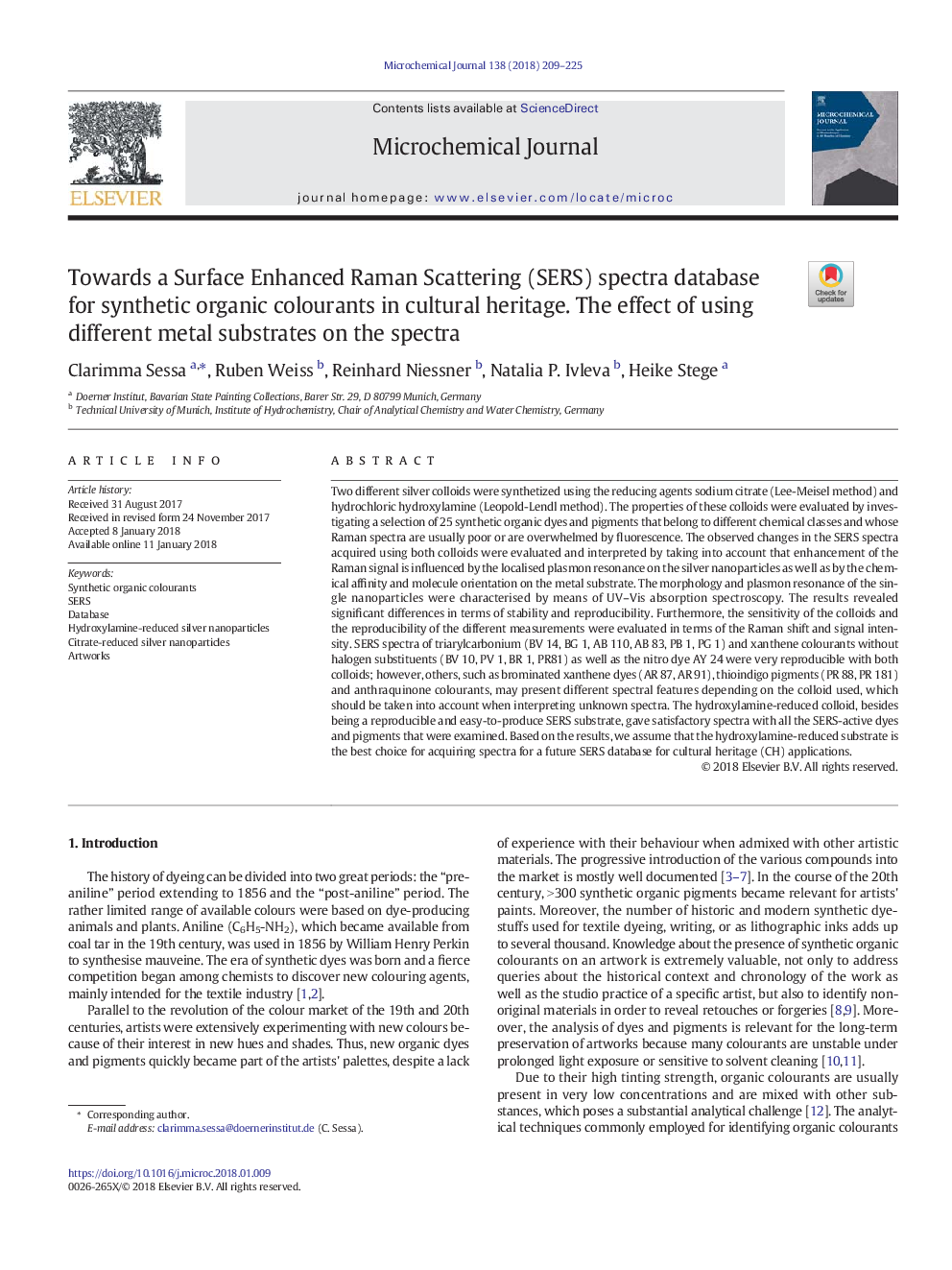| کد مقاله | کد نشریه | سال انتشار | مقاله انگلیسی | نسخه تمام متن |
|---|---|---|---|---|
| 7640964 | 1494856 | 2018 | 17 صفحه PDF | دانلود رایگان |
عنوان انگلیسی مقاله ISI
Towards a Surface Enhanced Raman Scattering (SERS) spectra database for synthetic organic colourants in cultural heritage. The effect of using different metal substrates on the spectra
دانلود مقاله + سفارش ترجمه
دانلود مقاله ISI انگلیسی
رایگان برای ایرانیان
موضوعات مرتبط
مهندسی و علوم پایه
شیمی
شیمی آنالیزی یا شیمی تجزیه
پیش نمایش صفحه اول مقاله

چکیده انگلیسی
Two different silver colloids were synthetized using the reducing agents sodium citrate (Lee-Meisel method) and hydrochloric hydroxylamine (Leopold-Lendl method). The properties of these colloids were evaluated by investigating a selection of 25 synthetic organic dyes and pigments that belong to different chemical classes and whose Raman spectra are usually poor or are overwhelmed by fluorescence. The observed changes in the SERS spectra acquired using both colloids were evaluated and interpreted by taking into account that enhancement of the Raman signal is influenced by the localised plasmon resonance on the silver nanoparticles as well as by the chemical affinity and molecule orientation on the metal substrate. The morphology and plasmon resonance of the single nanoparticles were characterised by means of UV-Vis absorption spectroscopy. The results revealed significant differences in terms of stability and reproducibility. Furthermore, the sensitivity of the colloids and the reproducibility of the different measurements were evaluated in terms of the Raman shift and signal intensity. SERS spectra of triarylcarbonium (BV 14, BG 1, AB 110, AB 83, PB 1, PG 1) and xanthene colourants without halogen substituents (BV 10, PV 1, BR 1, PR81) as well as the nitro dye AY 24 were very reproducible with both colloids; however, others, such as brominated xanthene dyes (AR 87, AR 91), thioindigo pigments (PR 88, PR 181) and anthraquinone colourants, may present different spectral features depending on the colloid used, which should be taken into account when interpreting unknown spectra. The hydroxylamine-reduced colloid, besides being a reproducible and easy-to-produce SERS substrate, gave satisfactory spectra with all the SERS-active dyes and pigments that were examined. Based on the results, we assume that the hydroxylamine-reduced substrate is the best choice for acquiring spectra for a future SERS database for cultural heritage (CH) applications.
ناشر
Database: Elsevier - ScienceDirect (ساینس دایرکت)
Journal: Microchemical Journal - Volume 138, May 2018, Pages 209-225
Journal: Microchemical Journal - Volume 138, May 2018, Pages 209-225
نویسندگان
Clarimma Sessa, Ruben Weiss, Reinhard Niessner, Natalia P. Ivleva, Heike Stege,